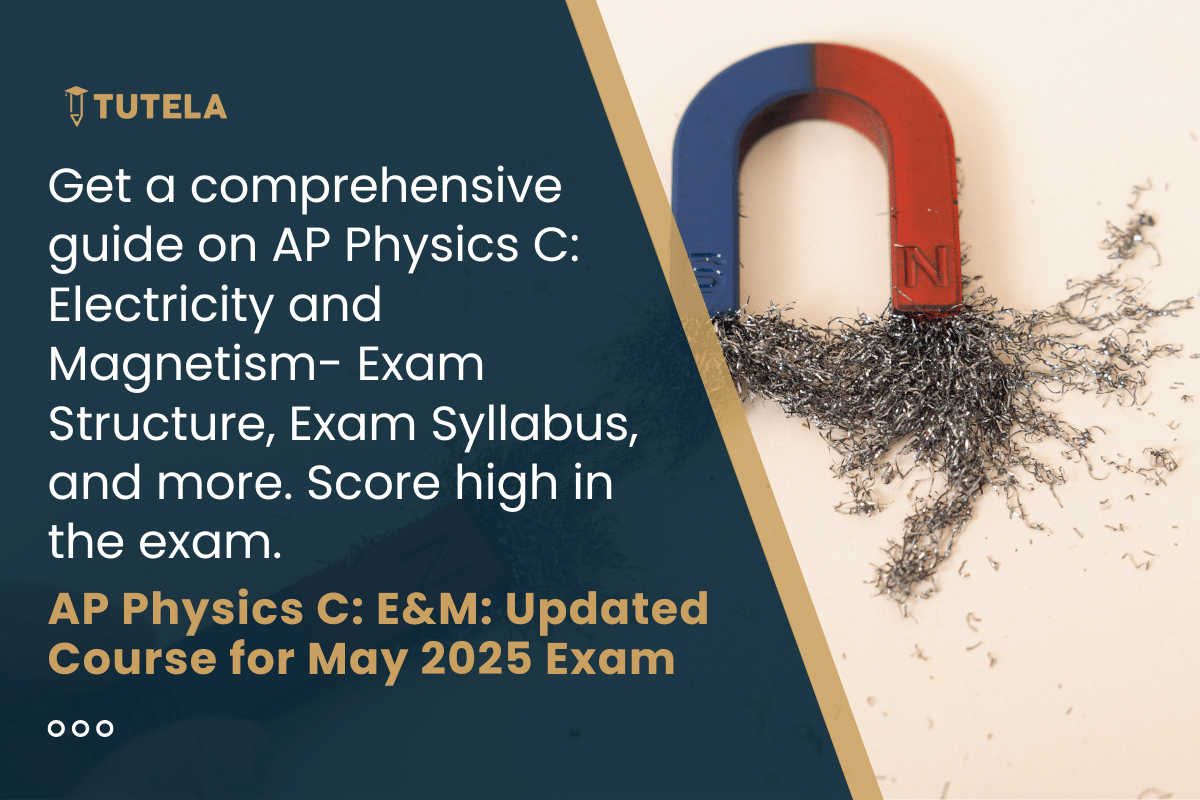
Welcome, physics enthusiasts, to the world of AP Physics C: Electricity and Magnetism. From fundamental principles to intricate concepts, we'll navigate the intricacies of the electromagnetic world, offering essential insights for the upcoming AP Physics C: Electricity and Magnetism Exam. The AP Physics C: Electricity and Magnetism exam for May 2025 has undergone some changes. We have incorporated these changes below. The AP Physics C: Electricity and Magnetism Exam is on 15th May 2025.
In this blog, we aim to be the student's go-to guide, breaking down the entire syllabus of AP Physics C: Electricity and Magnetism in a concise and engaging manner. We dive into the world of electric charges and magnetic fields. Get ready for a journey that spans from understanding conductors and capacitors to exploring the magic of electromagnetic induction.
| Unit Name | Description | Weightage in the Exam |
| Unit 1: Electric Charges, Fields, and Gauss’s Law |
| 15-25% |
| Unit 2: Electric Potential |
| 10-20% |
| Unit 3: Conductors and Capacitors |
| 10-15% |
| Unit 4: Electric Circuits |
| 15-25% |
| Unit 5: Magnetic Fields and Electromagnetism |
| 10-20% |
| Unit 6: Electromagnetic Induction |
| 10-20% |
The AP Physics C: Electricity and Magnetism exam for May 2025 has undergone some changes. The updated structure is as follows:
Section I: Multiple-Choice Questions (MCQs)
Section II: Free-Response Questions (FRQs)
Types of Questions:
General Changes
1. Electrical Engineering: AP Physics C: Electricity and Magnetism provides a solid foundation for understanding electrical circuits, electromagnetism, and the principles essential to electrical engineering majors.
2. Physics and Astrophysics: This course is a stepping stone for those pursuing majors in physics and astrophysics, equipping students with insights into the electromagnetic forces shaping the universe.
3. Electronics and Communication Engineering: With a focus on electrical circuits and electromagnetism, this major benefits from the foundational knowledge gained in AP Physics C: Electricity and Magnetism.
4. Renewable Energy Engineering: Understanding electromagnetism is crucial in the field of renewable energy, making this course valuable for those interested in sustainable energy solutions.
5. Applied Physics: The practical applications of electricity and magnetism covered in this course align well with the principles studied in applied physics, preparing students for real-world problem-solving.
6. Materials Science: The understanding of electromagnetic principles proves beneficial for materials science majors, particularly when exploring the behavior of materials in electric and magnetic fields.
7. Computer Engineering: The analytical skills developed in AP Physics C complement the requirements of computer engineering, contributing to success in hardware design and system integration.
8. Biophysics: For those intrigued by the intersection of physics and biology, especially in understanding electrical impulses in living organisms, AP Physics C: Electricity and Magnetism offers relevant insights for biophysics majors.
9. Nanotechnology: The principles of electromagnetism play a role in the behavior of materials at the nanoscale, making this course relevant for those pursuing majors in nanotechnology.
10. Telecommunications Engineering: Understanding electric circuits and signal transmission is key in telecommunications engineering, making AP Physics C: Electricity and Magnetism a valuable foundation for this field.
TutelaPrep’s College Navigator allows students to search for colleges based on their preferred country and course. Not only that, it also provides valuable insights into each college’s specific admission requirements for those exams. Through College Navigator, you can even connect with alumni at your chosen colleges to get a firsthand feel for campus life and academics.
We hope this article helped you with the subject knowledge. Reach out to us by filling out our assistance form if you need any help with the preparations.